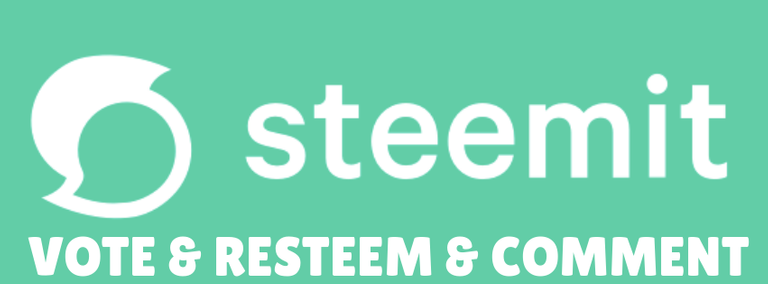4 Marketing Tactics that Overcome the Paradox of Personalization
First thanks for reading my posts! Would be great if you join my steemtalk channel on discord, where you can talk to steemians and exchange your experience with this wonderful platform https://discord.gg/GTdw2Pt

Personalized ads are the future of marketing, but what works and what doesn't? Try these tips and create a quality personalized shopping experience.
The post 4 Marketing Tactics that Overcome the Paradox of Personalization appeared first on The Shutterstock Blog.
Personalized ads are the future of marketing, but what works and what doesn’t? Try these tips and create a quality personalized shopping experience.
Imagine you’re a consumer on the hunt for some new sunglasses. You browse a retailer’s website, but leave without making a purchase. Hours later, while on Facebook, you notice an ad for those same shades — and what do you know? They’re popping up on other sites, too.
With campaigns like this, the goal for marketers is to nudge shoppers toward buying products they’ve previously shown interest in. But let’s consider how the shopper feels. One survey, conducted by InMoment, found three-quarters of customers find most forms of personalization to be “at least somewhat creepy.”
Attempts at personalization can fail for other reasons too. Bungle the data on potential customers, and you might annoy or even offend them with irrelevant ads. According to research from Accenture, in 2016 “poor personalization and lack of trust” led 41 percent of consumers to switch companies. This cost American companies $756 billion.
For all of the challenges associated with this form of digital marketing, though, personalization does have its perks. Global management consulting firm McKinsey & Company reports that many consumers value personalization for providing relevant recommendations. Consumers also liked reminders about products that might be of interest, seamless omnichannel communications, and loyalty programs. In other words, when done well it can boost sales, build brand trust, and actually appeal to consumers.
All it takes is the right approach.
Integrating with Mobile Apps

Image by leungchopan.
It used to be that mobile apps were static. Everyone got the same app experience, regardless of their preferences. But mobile apps have since evolved. Users of hotel booking apps can save trip data and create lists of their favorite properties. Retailer apps make suggestions for products based on their unique tastes and let customers create virtual closets.
Personalized features like these can provide indispensable benefits to brands. “Personalization of mobile apps is essential to cultivating customer retention,” explains Toby Hassan Fishman, cofounder and chief creative officer with New York-based agency Eff Creative Group. “It creates a switching cost which keeps customers from jumping ship — when they’ve tailored their digital experience towards their preferences, moving to an un-customized rival app becomes unthinkable.”
Encouraging users to personalize their mobile app experience also generates customer data that companies can use to tailor other brand interactions, Hassan Fishman says. This data can be used to acquire new customers too. It helps brands to predict what will resonate with other shoppers. This knowledge helps them craft their marketing messages accordingly.
But again, there’s a fine line between customization and creepiness. The trick, she says, is to strike a balance between novel content and salesmanship. “When every piece of a content campaign is thought out with strategy and creativity, instead of showing as intrusive a brand reaches deep into its core audience and achieves a meaningful connection.”
Personalized Social Media

Image by Pe3k.
Earlier this year, The Huffington Post published an article titled, “Why Personalized Content on Social Media Is the Next Big Thing.” Its author argued that by leveraging social media data and its ability to segment audiences, marketers can understand what problems customers need to solve. This makes them feel more connected to their brands, and ultimately builds long-term relationships.
In recent years, tools like Facebook Audience Insights have made it easier for marketers to target their social media content. Say you’re trying to target women above the age of 65 in your area who are interested in boutique gift shopping. You can show them seasonal ads that promote the graduation gifts you sell in your store. These tools create a marketing experience that’s useful to the consumer and more effective for your business.
On Twitter, an advertising option called Tailored Audiences allows you to re-market to users who have previously shown interest in your products. The difference between this approach and chasing potential customers with ads all over the web lies in the nature of the content. Instead of showing a consumer the exact product they previously explored on your website — a tactic that can read as disturbing or pushy — take a cue from Twitter advertiser iClothing. Target consumers who have visited your site, but test different creative elements to see which one your audience likes best.
Create Interactive Content

Image by Mila Supinskaya Glashchenko.
As proven by the success of platforms like BuzzFeed, interactive content in the form of quizzes and questionnaires have a knack for engaging users. But interactive content isn’t only useful to business-to-consumer brands. On the B2B side, it can be used to qualify leads while also entertaining potential customers in what can sometimes be an uninspired marketing environment.
“Everyone is doing the same kind of thing. There’s all this noise, and it’s super generic,” Melissa Nazar, director of content strategy with Boston-based marketing technology company SnapApp, says of the current B2B marketing space. “There’s a difference between putting a name in a form and really thinking about the buyer journey.”
SnapApp creates content for its clients that ranges from polls and surveys to questionnaires, infographics, and personality tests. By making them interactive, Nazar says, companies can “meet the buyer where they are.”
For example, SnapApp developed a solution finder for an interactive software provider. The solution finder asks questions and suggests the right product for each respondent’s needs. This gives the company’s sales team the insights it needs to launch a conversation, rather than relying on vague, sometimes inaccurate signals. The data sourced from interactive content confirms which customers are ready for that next step in the purchasing process.
At a time when many forms of personalization feel like an invasion of privacy, interactive content is also a great way to avoid that dreaded “creepy” factor, Nazar says. “Because you’re truly engaging with folks, actually asking them via questions what they’re looking for or what they want, it’s less of a surprise when they get a retargeted ad for a product from your company. The result is that you, the marketer, get the insights to personalize your marketing efforts, prospects get marketing that’s more tailored, and no one wastes time.”
Personalized Email Marketing

Image by Nutlegal Photographer.
Email is among the most intimate of digital channels, and that makes it a tricky medium. You want to create an experience that feels personal in order to build a bond with customers. But, get too personal and you risk scaring them away.
The solution? Keep those “Forget something in your cart?” emails to a minimum, and focus instead on content that caters to your customers’ interests. It is possible to move beyond the “Dear X” phase of personalization without having to go to the opposite extreme.
Start by creating buyer personas. Use these fictional representations of your customers to determine what kind of content each group will be most interested in based on their age, gender, location, job, buying history, and so on. You can also make emails feel more personal by referencing geographic factors like the local weather and time of day. The more data you have on your customers, the better equipped you’ll be to send them relevant, individualized messages. So, look for data analytics tools that can pull data from multiple platforms to build a more complete picture.
There’s no doubt about it: Personalization is a double-edged sword. But, learning how to master it is a powerful way to connect with your customers and grow your business, big or small.
Top Image by adtapon duangnim.
The post 4 Marketing Tactics that Overcome the Paradox of Personalization appeared first on The Shutterstock Blog.
PLEASE RESTEEM, UPVOTE AND COMMENT MY POSTS! I WILL UPVOTE BACK!

Powered by WPeMatico
#food #cooking #photography #dinner #meal #meat #vegetables #photos #thanks The Shutterstock Blog http://shutterstock.com/blog/feed/?#
Source
Copying/Pasting full or partial texts without adding anything original is frowned upon by the community. Repeated copy/paste posts could be considered spam. Spam is discouraged by the community, and may result in action from the cheetah bot.
More information and tips on sharing content.
If you believe this comment is in error, please contact us in #disputes on Discord
Love this in-depth look at online marketing! A lot of these tactics are actually super helpful and work for the clients we work with. Thanks for posting. :)
This user is on the @buildawhale blacklist for one or more of the following reasons: